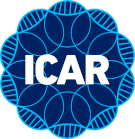Headings Format: Difference between revisions
m (Bgolden moved page Headings Format SOP to Headings Format without leaving a redirect) |
mNo edit summary |
||
| Line 1: | Line 1: | ||
[[Category: SOP]] | [[Category: SOP]] | ||
This | This page provides the standards for headings and how to create them. There should be no need for a heading with the page's title since the page's name should be its title. For example, an page on DNA Technology should be named "DNA_Technology". This page primarily discusses MediaWiki's markup symbols for creating headers. This can also be accomplished in the visual editor ("Edit" tab top right of the page) using the dropdown menu in the top right of the visual editor. | ||
There is no need to add numbering within | There is no need to add numbering within a page; Mediawiki automatically creates the within page numbering. | ||
A within- | A within-page table of contents such as the one below this paragraph is automatically created by Mediawiki when three or more headings of any level are created within a page. | ||
=Level 1 heading= | =Level 1 heading= | ||
Body Text - The wikitext markup language provides easy-to-use symbols to create most document elements. Authors are encouraged to use only these elements rather than insert more complex HTML directives. For example, a level 1 heading is created by starting and ending the text line of the heading with an equal sign (=). The level 1 heading for this section was created with, | Body Text - The wikitext markup language provides easy-to-use symbols to create most document elements. Authors are encouraged to use only these elements rather than insert more complex HTML directives. For example, a level 1 heading is created by starting and ending the text line of the heading with an equal sign (=). The level 1 heading for this section was created with, | ||
| Line 28: | Line 28: | ||
Begin and end the level 4 heading text with five equal signs (=====). | Begin and end the level 4 heading text with five equal signs (=====). | ||
=New level 1 heading= | =New level 1 heading= | ||
This is the second level 1 heading within this | This is the second level 1 heading within this page. It was created by beginning and ending the heading text with a single equal sign (=), as before. | ||
==New level 2 heading== | ==New level 2 heading== | ||
When a new level 2 heading is created after a new level 1 heading, it will be numbered beginning with the new level 1 heading's number. | When a new level 2 heading is created after a new level 1 heading, it will be numbered beginning with the new level 1 heading's number. | ||
| Line 34: | Line 34: | ||
etc., etc. | etc., etc. | ||
For formatting of bullet lists see [[Bullet Lists Format SOP]] | For formatting of bullet lists see [[Bullet Lists Format|Bullet Lists Format SOP]] | ||
Revision as of 14:04, 18 September 2023
This page provides the standards for headings and how to create them. There should be no need for a heading with the page's title since the page's name should be its title. For example, an page on DNA Technology should be named "DNA_Technology". This page primarily discusses MediaWiki's markup symbols for creating headers. This can also be accomplished in the visual editor ("Edit" tab top right of the page) using the dropdown menu in the top right of the visual editor.
There is no need to add numbering within a page; Mediawiki automatically creates the within page numbering.
A within-page table of contents such as the one below this paragraph is automatically created by Mediawiki when three or more headings of any level are created within a page.
Level 1 heading
Body Text - The wikitext markup language provides easy-to-use symbols to create most document elements. Authors are encouraged to use only these elements rather than insert more complex HTML directives. For example, a level 1 heading is created by starting and ending the text line of the heading with an equal sign (=). The level 1 heading for this section was created with,
=Level 1 heading=
Authors are encouraged to view the markup source (using the source editor) on pages such as this one for more examples of markup syntax. Occasionally, more complex formatting may be required to accomplish a formatting goal. In those situations, authors should strive to minimize the complexity of the HTML.
Level 2 heading
A level 2 heading is created by beginning and ending the text line of the heading with two equal signs (==). For example, the heading of this subsection was created with,
==Level 2 heading==
Level 3 heading
Level 3 headings are created by beginning and ending the line of heading text with three equal signs (===),
===Level 3 heading===
Level 4 heading
Begin and end the level 4 heading text with four equal signs (====).
Level 5 heading
Begin and end the level 4 heading text with five equal signs (=====).
New level 1 heading
This is the second level 1 heading within this page. It was created by beginning and ending the heading text with a single equal sign (=), as before.
New level 2 heading
When a new level 2 heading is created after a new level 1 heading, it will be numbered beginning with the new level 1 heading's number.
New level 3 heading
etc., etc.
For formatting of bullet lists see Bullet Lists Format SOP
